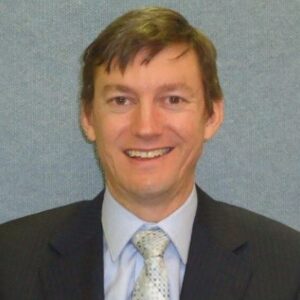Histiocytic disorders are a group of rare disorders characterised by the abnormal accumulation of histiocytes, a type of immune cell often found in tissues that regulates immune functions. There are three primary types of histiocytes, including monocytes (plays a role in inflammatory and anti-inflammatory responses during an immune response), macrophages (responsible for ingesting and eliminating foreign substances during an immune reaction), and dendritic cellsthe basic structural and functional unit of all living things (initiate and regulate the adaptive immune response).
Histiocytic disorders are broadly classified into five different groups: L group, C group, M group, R group, and H group. The L group, or Langerhans group, are classified as diseases involving Langerhans cells (an immune cell responsible for initiating an immune response when coming into contact with a foreign material), such as Langerhans cell histiocytosis (LCH). The C group, also known as cutaneous and mucocutaneous non-Langerhans cell histiocytosis, are classified as non-Langerhans cell histiocytic disorders that are localisedaffecting only one area of body to the skin or mucosal surfaces, such as the mouth, nose, and gastrointestinal system. The M group, also known as malignantcancerous, may grow and spread to other areas of the body histiocytic disorders, are classified by the presence of malignant cells within the tumour(s). The R group, also known as Rosai-Dorfman disease and miscellaneous non-cutaneous non-Langerhans cell histiocytosis or sinus histiocytosis, are classified as non-Langerhans histiocytic disorders that often involve lymph nodessmall bean-shaped structures that filters harmful substances from lymph fluid. The H group, also known as hemophagocytic lymphocytosis and macrophage activation syndrome, is composed entirely of hemophagocytic lymphohistiocytosis, a rare and aggressive disease caused by the overactivation of the immune system.
This page will focus specifically on R group histiocytic disorders, such as familial Rosai-Dorfman disease (RDD), sporadic RDD, classic (nodal) RDD, extranodal RDD, neoplasia-associated RDD, and immune disease-associated RDD.
R group histiocytic disorders are slightly more common in males, with the average age of diagnosisthe process of identifying a disease based on signs and symptoms, patient history and medical test results varying between subtypes. However, anyone can develop this disease.
Types of R Group Histiocytic Disorders
R group histiocytic disorders are broadly classified into two categories: familial RDD (RDD with a family history) and sporadic RDD (RDD without a family history). It can also be further categorised based on tumoura tissue mass that forms from groups of unhealthy cells location and associated conditions.
Classic (Nodal) Rosai-Dorfman Disease
Classic RDD, also known as nodal RDD, is the most common subtype of R group histiocytic disorders that causes swelling of the lymph nodes in the body. In most cases, it affects the lymph nodes of the neck but in rare cases in can develop in the groinarea between the abdomen and thighs, retroperitoneuma space located behind the abdomen that contains many important bodily structures, such as the kidneys (a space located behind the abdomenstomach, stomach area, belly that contains many important bodily structures such as the kidneys) and/or mediastinumthe space between the lungs that holds many important structures, including the heart, trachea and oesophagus (space between the lungs that holds many important structures, including the heart, tracheathe tube that connects your voicebox (larynx) to the lungs, also known as a windpipe, and oesophagus). Classic RDD most commonly affects children and young adults, is generally benignnot cancerous, can grow but will not spread to other body parts, and can have an excellent prognosisto predict how a disease/condition may progress and what the outcome might be.
Extranodal Rosai-Dorfman Disease
Extranodal RDD is a less common subtype of R group histiocytic disorders that is found in areas other than the lymph nodes. Most commonly, extranodal RDD occurs in the skin and is called cutaneous RDD, however it can also develop in the nasal cavity/sinuses, bone, eyes/eyelids, and central nervous system (CNS). Unlike classic RDD, extranodal RDD tends to affect older individuals generally between 40-60 years old. In some cases, extranodal RDD can be aggressive, but it can have a good prognosis when found early.
Cutaneous Rosai-Dorfman Disease
Cutaneous RDD is the most common subtype of extranodal RDD which occurs on the skin. While it is a type of RDD, cutaneous RDD is classified as a cutaneous non-Langerhans cell histiocytosis and is classified as a C group histiocytic disorder.
For more information on C group histiocytic disorders, please refer to the Rare Cancers Australia Histiocytic disorders (C Group) page.
Neoplasia-associated Rosai-Dorfman Disease
Neoplasia-associated RDD is a rare subtype of R group histiocytic disorders that causes RDD to develop in association with another condition in the body, such as:
- Lymphomas.
- Leukaemias.
- Myeloid neoplasms.
- Malignant histiocytic disorders.
- Langerhans cell histiocytosis.
- Erdheim-Chester disease.
The aggressiveness and prognosis of this disease often vary based on the condition it’s associated with.
Immune Disease-associated Rosai-Dorfman Disease
Immune disease associated RDD is a rare subtype of R group histiocytic disorders that causes RDD to develop in association with an autoimmune condition in the body, such as:
- Systemic lupus erythematosus.
- Idiopathic juvenile arthritis.
- Autoimmune haemolytic anaemiaa condition where there aren't enough red blood cells in the blood, causing fatigue, weakness and pale skin and affecting how the body responds to infection.
- Human Immunodeficiency virus (HIV).
The aggressiveness and prognosis of this disease often vary based on the condition it’s associated with.
Treatment
Each patient with an R group histiocytic disorder will present with a unique disease behaviour, with varying locations, and symptoms. As such, there is no one treatment method that will work for everyone, and there is no standard stagingthe process of determining how big the cancer is, where it started and if it has spread to other areas system for this disease. Instead of staging and grading, your doctor will recommend a treatment plan based on the following factors:
- Cancera disease where abnormal cells split without control and spread to other nearby body tissue and/or organs location.
- Whether or not the tumour(s) have spread.
- Your age.
- General health.
- Treatment preferences.
Your doctor may recommend genetic testinga procedure that analyses DNA to identify changes in genes, chromosomes and proteins, which can be used to analyse tumour DNA to help determine which treatment has the greatest chance of success, which analyses your tumour DNA and can help determine which treatment has the greatest chance of success. Your doctor will discuss the most appropriate course of treatment for you.
Treatment options for an R group histiocytic disorder may include:
- Watch and waitthe close monitoring of a cancer without giving treatment until symptoms appear or worsen (may be an option for some asymptomatic patients without an associated condition).
- Surgerytreatment involving removal of cancerous tissue and/or tumours and a margin of healthy tissue around it to reduce recurrence to remove as much of the tumour(s) as possible.
- Corticosteroidsa type of anti-inflammatory medication that is used to treat inflammation (rare).
- Chemotherapya cancer treatment that uses drugs to kill or slow the growth of cancer cells, while minimising damage to healthy cells (rare).
- Clinical trialsresearch studies performed to test new treatments, tests or procedures and evaluate their effectiveness on various diseases.
- Palliative carea variety of practices and exercises used to provide pain relief and improve quality of life without curing the disease.
Risk factors
While the cause of RDD remains unknown, the following factors may increase the likelihood of developing the disease:
- Having a family history of RDD.
- Certain genetic mutations, potentially including:
- KRAS gene.
- MAP2K1 gene.
- SLC29A3 gene.
- Having viral infections, such as:
- Herpes.
- Epstein-Barr virus.
- Cytomegalovirus.
- HIV.
- Having autoimmune conditions, such as:
- Systemic lupus erythematosus.
- Idiopathic juvenile arthritis.
- Autoimmune haemolytic anaemia.
- HIV.
- Having certain cancers such as:
- Lymphomacancers of the lymphatic system.
- Leukaemiacancer of blood and/or blood forming tissues.
- Myeloid neoplasms.
- Malignant histiocytic disorders.
- Langerhans cell histiocytosis.
- Erdheim-Chester disease.
Not everyone with these riskthe possibility that something bad will happen factors will develop the disease, and some people who have the disease may have none of these risk factors. See your general practitioner (GP) if you are concerned.
Symptoms
The symptoms of RDD often vary based on the location of the tumour(s).
General Symptoms of RDD
General symptoms of RDD may include:
- Fever.
- Paleness of the skin.
- Unexplainable weight loss/loss of appetite.
- Fatiguea state of extreme tiredness or exhaustion, can be physical or mental.
- Night sweats.
- Malaisegeneral feeling of being unwell.
- Persistent runny nose (rhinitis).
- Hepatomegalyenlargement of the liver.
- Splenomegalyenlargement of the spleen.
Symptoms of RDD in Lymph Nodes
In addition to the general symptoms listed above, patients with RDD in the lymph nodes may also experience painless, swollen lumps on both sides of the neck. In rare cases, these lumps may also appear in the groin, armpits, and/or the mediastinum.
Symptoms of Cutaneous RDD
In addition to the general symptoms listed above, patients with RDD in the skin may also experience:
- Yellow or purple skin lesions.
- A reddish, rash-like inflammation of the skin.
- Small, solid papules and/or nodules on the skin.
- Pus-filled skin lesions.
Symptoms of RDD in the Nasal Cavity/Sinuses
In addition to the general symptoms listed above, patients with RDD in the nasal cavity and sinuses may also experience:
- Blocked nasal passages (nasal obstruction).
- Nosebleeds.
- Nasal deformities.
- Nasal massa growth of cells that come together to make a lump, may or may not be cancer.
- Reduced hearing.
- Lost sense of smell.
- Dyspneadifficulty breathing, shortness of breath.
Symptoms of RDD in Bones
In addition to the general symptoms listed above, patients with RDD in bones may also experience:
- Pain in affected area.
- Swelling in affected area.
- Decreased calcium in the bones.
- Easily broken bones.
- Weakness in affected area.
Symptoms of RDD in the CNS
In addition to the general symptoms listed above, patients with RDD in the CNS may also experience:
- Headaches.
- Seizures.
- Facial paralysis.
- Changes in motor function.
- Changes in sensory function.
Symptoms of RDD in the Eyes/Eyelids
In addition to the general symptoms listed above, patients with RDD in the eyes or eyelids may also experience:
- Changes in vision, such as double vision.
- Proptosisbulging or protrusion of one or both of the eyes out of the eye sockets, also known as exophthalmos.
Not everyone with the symptoms above will have cancer, but see your general practitioner (GP) if you are concerned.
Diagnosis
If your doctor suspects you have an R group histiocytic disorder, they may order the following tests to confirm the diagnosis and refer you to a specialist for treatment:
- Physical examinationan examination of your current symptoms, affected area(s) and overall medical history.
- Neurological examinationan assessment of sensory and motor functions, such as vision, balance and coordination.
- Imagingtests that create detailed images of areas inside the body tests, potentially including:
- CT (computed tomography) scana type of medical imaging that uses x-rays and computer technology to create detailed images of the body.
- PET (positron emission tomography) scana type of medical imaging that uses radioactive tracers to create detailed images of the body.
- Blood teststesting done to measure the levels of certain substances in the blood.
- Biopsyremoval of a section of tissue to analyse for cancer cells.



